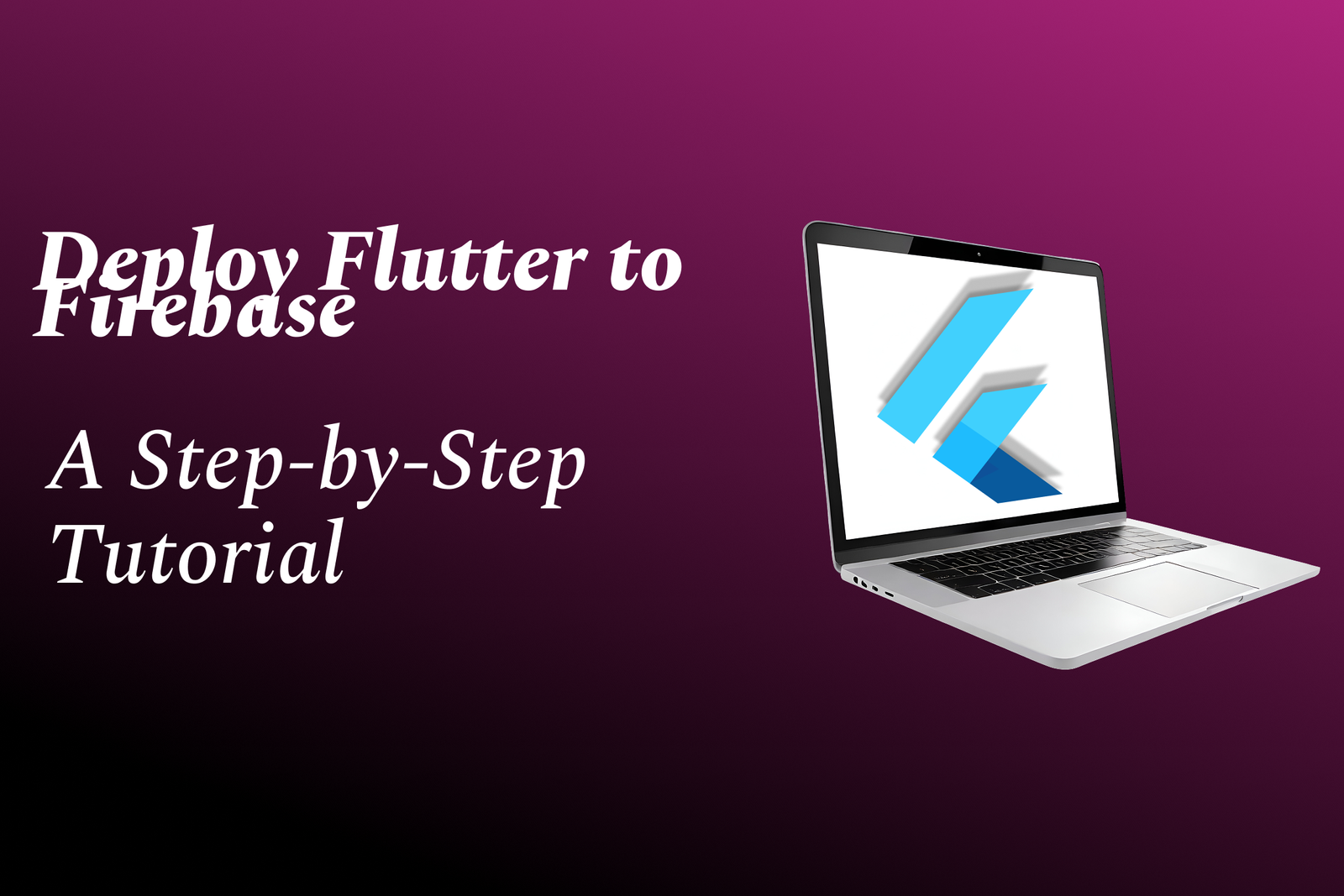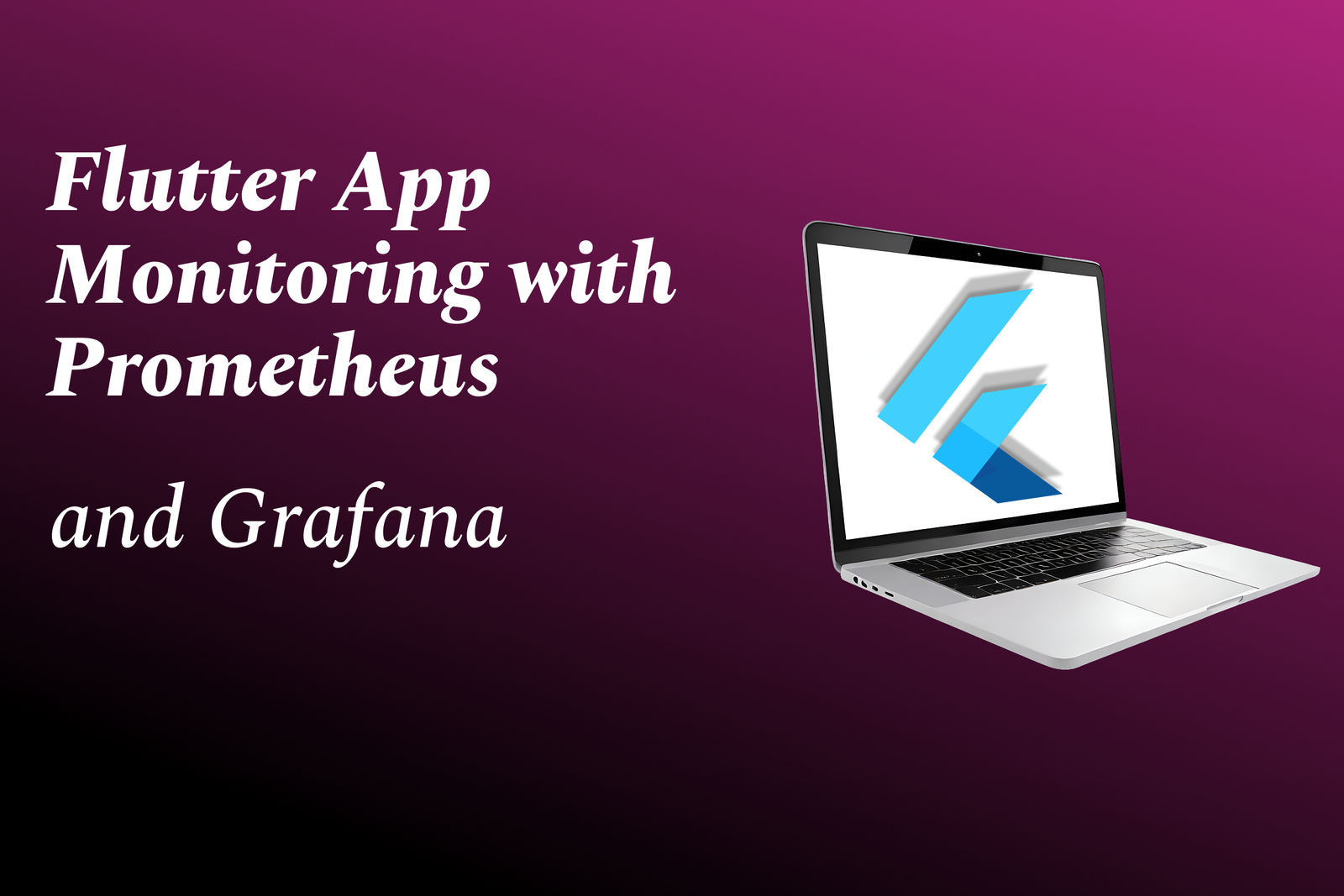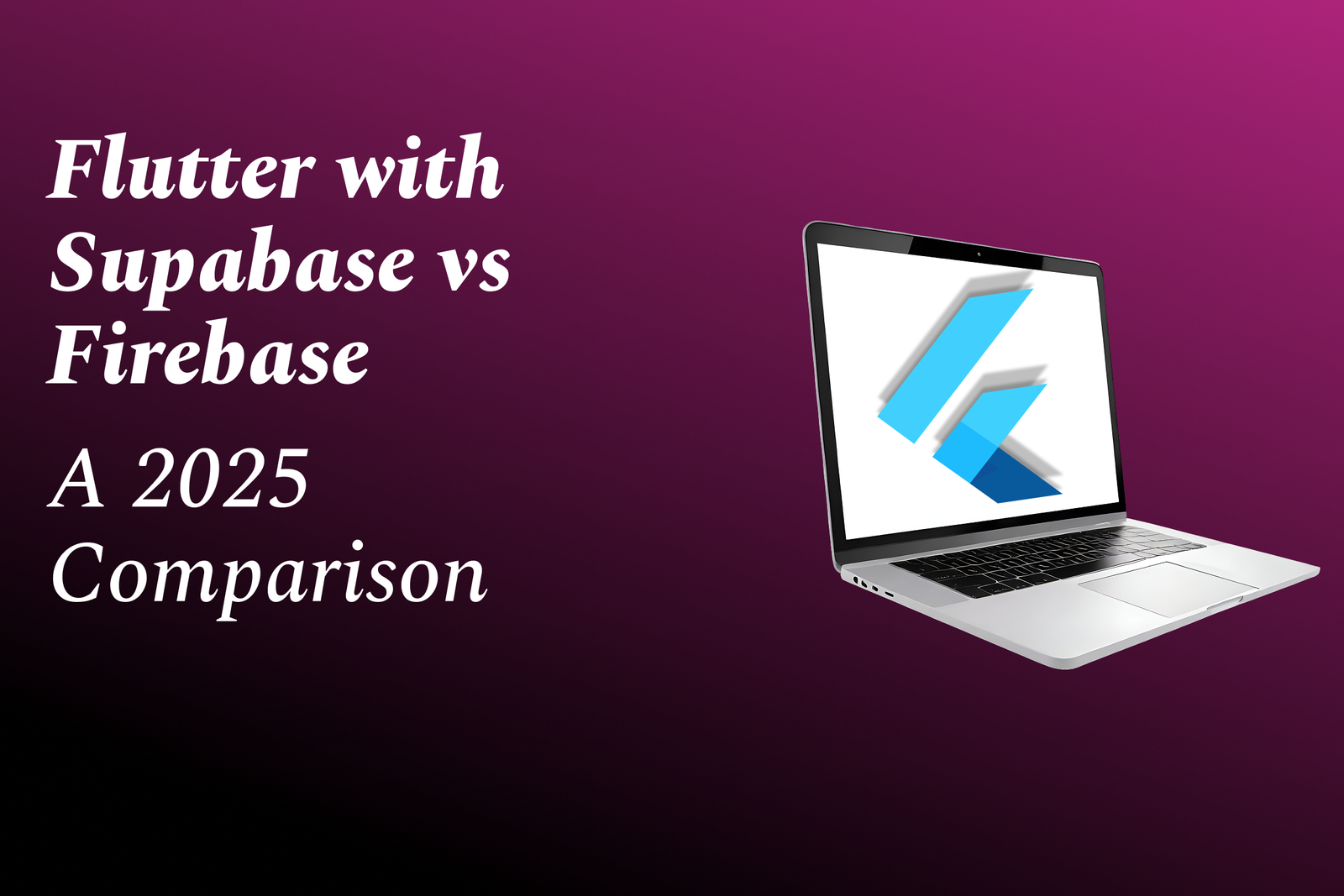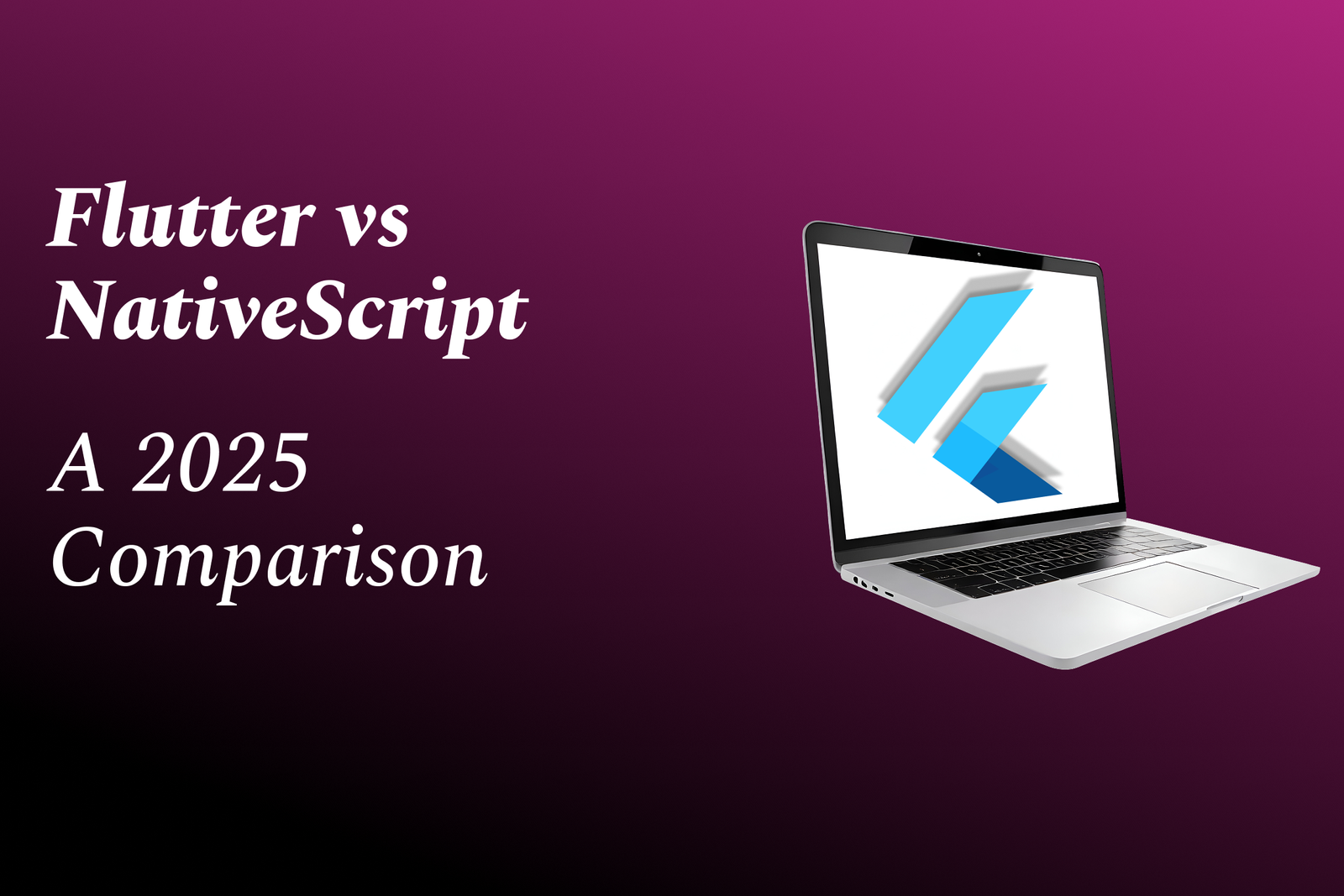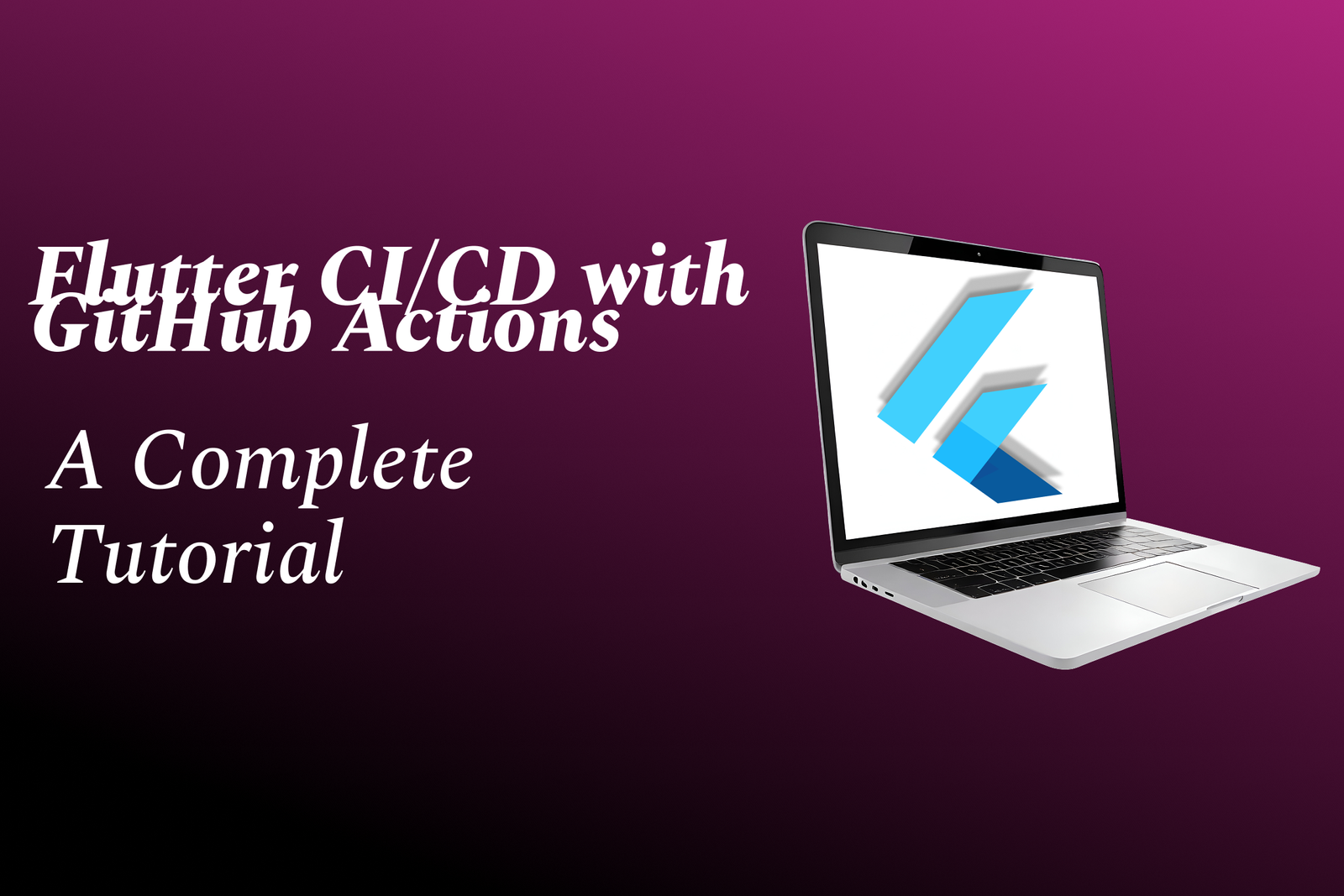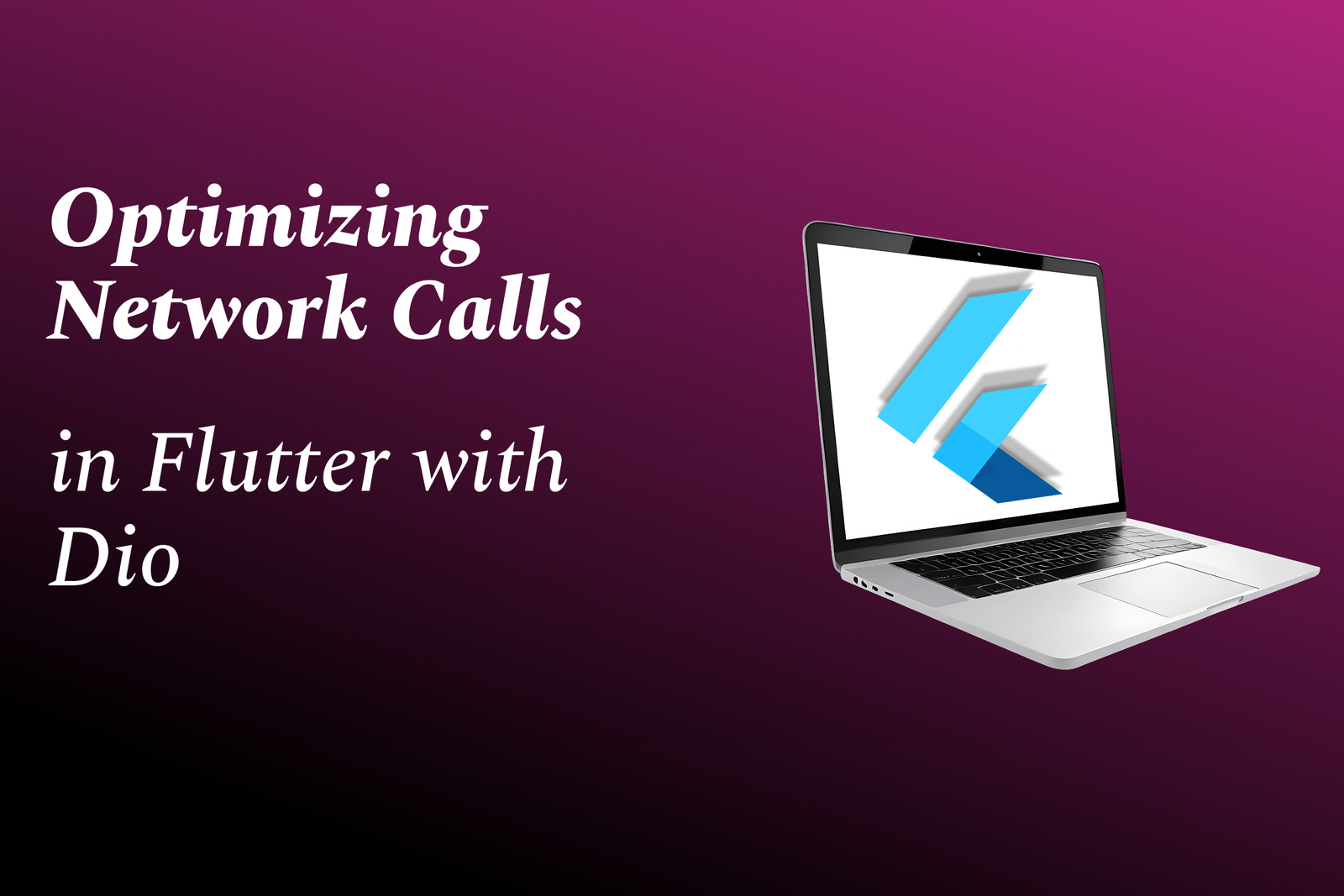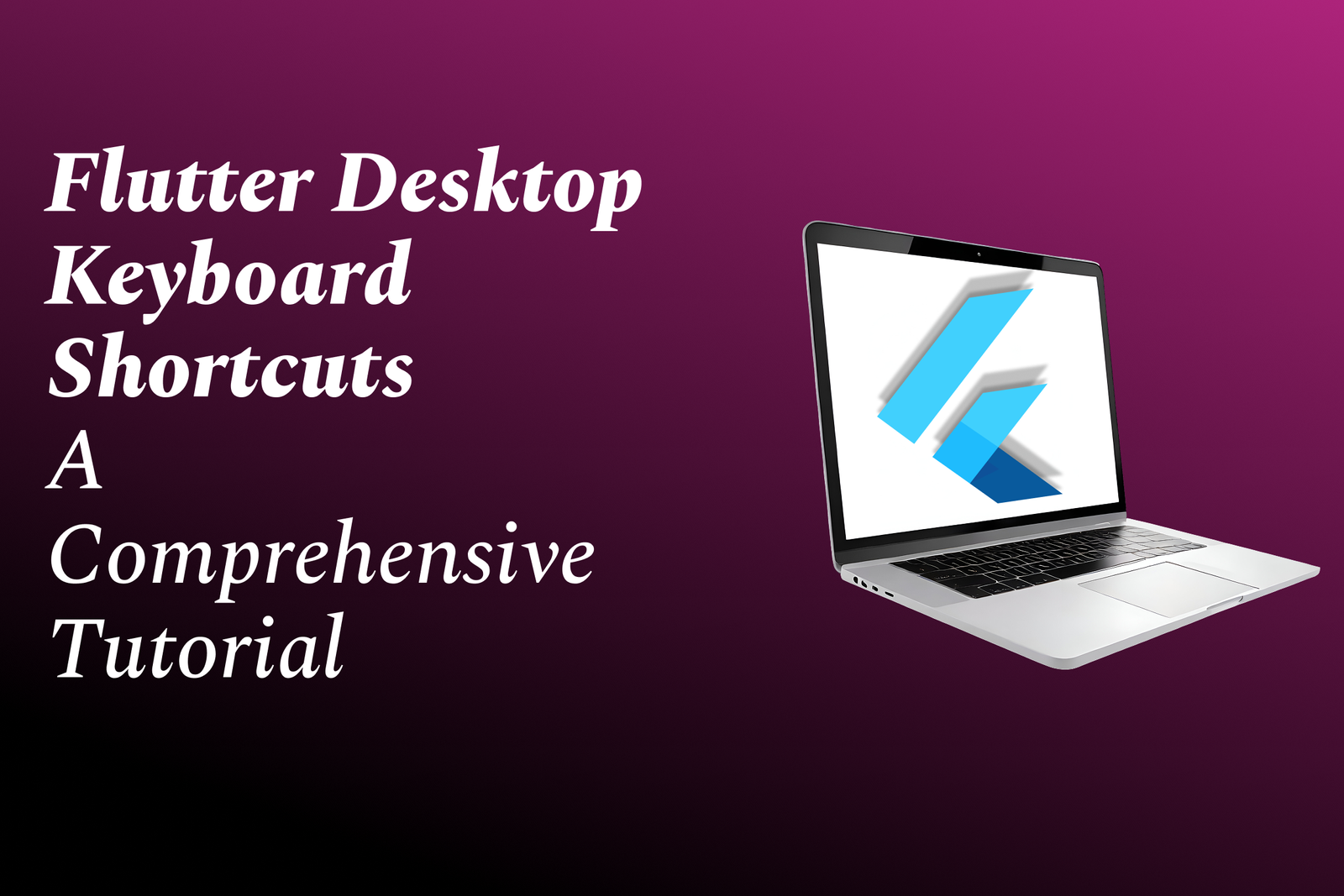Deploy Flutter To Firebase: A Step-By-Step Tutorial
JustAcademy’s "Deploy Flutter to Firebase: A Step-by-Step Tutorial" is a concise guide that walks you through preparing a Flutter app, configuring Firebase services (Authentication, Firestore, Hosting), and using the Firebase CLI to build and deploy your app—covering both web hosting and integration for Android/iOS where relevant. It explains creating a Firebase project, adding platform-specific Firebase SDKs, adjusting app settings, running production builds, initializing Firebase Hosting, and performing the final deploy, with tips for testing and automating releases via CI/CD. By following the tutorial, developers get a practical, end-to-end workflow to ship scalable, real-time Flutter apps quickly and reliably.
Deploy Flutter To Firebase: A Step-By-Step Tutorial
JustAcademy’s “Deploy Flutter to Firebase: A Step-by-Step Tutorial” shows how to prepare and publish cross-platform Flutter apps using Firebase’s managed services—Authentication, Firestore, and Hosting—so you can add real-time features, secure user sign-in, and push updates quickly. It’s useful because it removes infrastructure friction, accelerates time-to-market with a clear, practical workflow (including build and deploy steps), and teaches CI/CD-ready practices that help learners and teams ship production-ready apps for web, Android, and iOS.
To Download Our Brochure: **https://www.justacademy.co/download-brochure-for-free
**
Message us for more information: **https://api.whatsapp.com/send?phone=919987184296
**
JustAcademy’s “Deploy Flutter to Firebase: A Step by Step Tutorial” shows how to prepare and publish cross platform Flutter apps using Firebase’s managed services—Authentication, Firestore, and Hosting—so you can add real time features, secure user sign in, and push updates quickly. It’s useful because it removes infrastructure friction, accelerates time to market with a clear, practical workflow (including build and deploy steps), and teaches CI/CD ready practices that help learners and teams ship production ready apps for web, Android, and iOS.
Course Overview
JustAcademy’s “Deploy Flutter to Firebase” teaches building, integrating, and deploying cross-platform Flutter apps with Firebase (Auth, Firestore, Hosting) through concise, project-based steps.
Course Description
Step-by-step, hands-on course to build, integrate, and deploy Flutter apps with Firebase.
Key Features
1 - Comprehensive Tool Coverage: Provides hands-on training with a range of industry-standard testing tools, including Selenium, JIRA, LoadRunner, and TestRail.
2) Practical Exercises: Features real-world exercises and case studies to apply tools in various testing scenarios.
3) Interactive Learning: Includes interactive sessions with industry experts for personalized feedback and guidance.
4) Detailed Tutorials: Offers extensive tutorials and documentation on tool functionalities and best practices.
5) Advanced Techniques: Covers both fundamental and advanced techniques for using testing tools effectively.
6) Data Visualization: Integrates tools for visualizing test metrics and results, enhancing data interpretation and decision-making.
7) Tool Integration: Teaches how to integrate testing tools into the software development lifecycle for streamlined workflows.
8) Project-Based Learning: Focuses on project-based learning to build practical skills and create a portfolio of completed tasks.
9) Career Support: Provides resources and support for applying learned skills to real-world job scenarios, including resume building and interview preparation.
10) Up-to-Date Content: Ensures that course materials reflect the latest industry standards and tool updates.
Benefits of taking our course
Functional Tools
1 - Flutter SDK and Dart
Install and configure the Flutter SDK and Dart language tools to build cross platform mobile apps with a single codebase.
Hands on sessions at JustAcademy cover SDK setup, PATH configuration, and platform specific toolchains for Android and iOS.
Students learn Flutter’s project structure, hot reload, widget lifecycle, and debugging basics to speed up development.
Practical labs include creating sample UIs, managing state, and optimizing Dart code for performance and size.
By the end, learners can scaffold, run, and troubleshoot Flutter apps locally and prepare them for Firebase integration.
2) Visual Studio Code / Android Studio
Use VS Code or Android Studio as the primary IDEs with extensions for Flutter and Dart for a productive development environment.
Training shows recommended plugins, keyboard shortcuts, emulator setup, and project navigation techniques.
Live demos cover integrated debugging, widget inspectors, and code refactorings to improve maintainability and readability.
Students perform guided exercises configuring emulators/simulators and debugging platform specific issues in both IDEs.
IDE focused modules teach workflows that match professional teams to prepare students for real world development.
3) FlutterFire CLI
Employ FlutterFire CLI to configure Firebase services in Flutter projects and generate platform specific configuration files.
Course labs demonstrate step by step linking of Android and iOS apps to a Firebase project using CLI commands.
Participants learn how to enable services like Auth, Firestore, and Analytics through automated setup to reduce manual errors.
Exercises include regenerating configs for multiple environments (dev/staging/prod) and handling platform specific adjustments.
This tool centered approach helps students automate repetitive setup tasks and standardize project configurations.
4) Firebase Console
Navigate the Firebase Console to create projects, enable services, and manage app credentials and quotas.
Hands on sessions guide students through console based tasks like API key management, OAuth client setup, and service enablement.
Learners practice inspecting data, monitoring usage, and configuring authentication providers and database rules from the console UI.
The console focused labs teach governance aspects such as billing alerts, usage quotas, and role based access controls.
Students finish confident in administering Firebase projects for development and production environments.
5) Firebase CLI
Leverage the Firebase CLI for deploying hosting, functions, and rules, and for interacting with the Firebase project from the terminal.
Training covers authentication with firebase login, initializing projects, and deploying hosting sites and Cloud Functions.
Practical labs include atomic deploys, rollback strategies, and scripting CI/CD pipelines that call Firebase CLI commands.
Students gain command line fluency for automating repetitive operations and integrating Firebase deploys into build workflows.
This module emphasizes reproducible deployments and auditability for team based projects.
6) Firebase Authentication
Implement user sign in flows using Firebase Authentication with email/password, OAuth providers, and anonymous sign in.
Students build secure authentication interfaces in Flutter and connect them to Firebase Auth SDKs with real time validation.
Classes cover token lifecycle, custom claims, session management, and best practices for secure client server interactions.
Hands on exercises include multi provider sign in, password recovery flows, and integrating user profiles with Firestore.
Security focused lessons teach how to minimize attack surface and comply with privacy regulations when managing user data.
7) Cloud Firestore
Model and query NoSQL data using Cloud Firestore for scalable, real time synchronization across clients.
Practical labs cover data modeling, composite indexes, batched writes, transactions, and offline persistence in Flutter apps.
Students learn to design collections and documents to optimize for reads/writes and to prevent hot spotting at scale.
Exercises include building chat, todo, and inventory apps that demonstrate real time updates and conflict resolution.
Discussions include cost implications and strategies to minimize read/write costs in production deployments.
8) Firebase Realtime Database
Explore Firebase Realtime Database for low latency sync use cases and legacy integration scenarios.
Training demonstrates the differences between Realtime Database and Firestore and when to choose each option.
Students implement streaming data updates, presence systems, and prioritized queries in Flutter applications.
Labs include migration strategies and coexistence patterns when projects need both databases during transition.
Emphasis is placed on rule definitions and hierarchical data modeling to keep reads efficient and secure.
9) Firebase Storage
Store and serve user generated files with Firebase Storage, integrating secure uploads and downloads in Flutter apps.
Hands on sessions cover client side file picking, resumable uploads, download URL management, and storage security rules.
Students practice handling thumbnails, caching, and large file streaming while minimizing bandwidth and cost.
Lessons include best practices for folder structures, naming conventions, and signed URL usage for temporary access.
Practical tasks teach how to combine Storage with Firestore metadata to create robust media serving workflows.
10) Cloud Functions for Firebase
Build server side logic with Cloud Functions to handle background processing, webhooks, and server side validation.
Course modules explain trigger types (Auth, Firestore, Storage, HTTP) and how to write TypeScript/JavaScript functions.
Students deploy functions via Firebase CLI, test locally with the Emulator Suite, and learn cold start and performance considerations.
Real project labs include image processing, email notifications, and scheduled jobs tied to app events and analytics.
Security and cost control topics cover limiting execution time, setting proper IAM roles, and logging strategies.
11 - Firebase Hosting
Deploy web assets, PWAs, and server side rendered content to Firebase Hosting with global CDN and custom domains.
Training walks students through build integration, single page app rewrites, and cache control configurations.
Hands on labs include deploying Flutter web builds, setting up HTTPS, and mapping domains with automated certificate provisioning.
Students learn hosting best practices for cache invalidation, rollback, and staging environments.
Modules also cover integrating Hosting with Cloud Functions for dynamic backends and SEO friendly routes.
12) Firebase Emulator Suite
Use the Firebase Emulator Suite to run Firestore, Auth, Functions, and Hosting locally for safe development and testing.
Sessions show how to wire the local emulators into Flutter apps and how to run integration test suites without cloud costs.
Students perform end to end testing scenarios, simulate edge cases, and validate security rules locally before deploys.
Class exercises emphasize repeatable CI friendly emulator runs and snapshot based test data seeding.
Emulator skills reduce risk by allowing full stack validation prior to production releases.
13) Git, GitHub, and Source Control Workflows
Adopt Git and GitHub for version control, code reviews, and collaborative development across student teams.
JustAcademy instructors teach branching strategies (Git Flow/trunk based), pull request etiquette, and conflict resolution.
Labs include creating PRs, running CI checks, code reviews, and merging with protection rules to simulate professional workflows.
Students practice collaboration, issue tracking, and release tagging to maintain deployment ready repositories.
This module prepares learners to work effectively in team based commercial environments.
14) Continuous Integration / GitHub Actions
Automate builds, tests, and deployments using GitHub Actions or similar CI/CD platforms to streamline releases.
Training covers pipeline definitions, secrets management, and runners for building Flutter apps and deploying to Firebase.
Hands on exercises implement workflows that run unit/widget tests, build web bundles, and trigger Firebase deploys on merge.
Students learn to create multi environment pipelines, canary releases, and rollback strategies for safer production changes.
CI focused lessons emphasize reproducibility, artifacts, and monitoring to maintain high quality delivery.
15) Firebase Security Rules and Testing Tools
Design and test Firebase Security Rules for Firestore, Realtime Database, and Storage to protect production data.
Course work includes writing expressive rules, using the Rules Simulator, and creating unit tests for rule behavior.
Students validate role based access, rule performance, and edge cases with automated rule test suites.
Labs guide the creation of least privilege policies and policies that scale with data structure changes.
Security modules ensure students can confidently lock down data while enabling legitimate app functionality.
16) Firebase Analytics & Performance Monitoring
Instrument apps with Firebase Analytics and Performance Monitoring to measure user behavior and runtime metrics.
Classes show event design, user property strategy, and how to interpret funnels and retention reports for product decisions.
Hands on labs include tracking custom events from Flutter, setting up conversion goals, and analyzing slow traces.
Students learn to combine analytics with A/B testing and remote config to iterate features based on data.
Lessons emphasize privacy compliant measurement and strategies to minimize metric noise.
17) Crashlytics and Error Reporting
Integrate Crashlytics to capture crashes, non fatal errors, and stack traces to prioritize stability fixes.
Training covers symbolication, breadcrumb logging, and grouping errors to surface high impact issues quickly.
Students practice triggering test crashes and viewing diagnostic reports in the Firebase Console to triage problems.
Modules include workflows for linking issues to source commits and automating bug fixing prioritization.
This tool focused instruction helps students reduce MTTR (mean time to recovery) in production apps.
18) Chrome DevTools and Browser Debugging
Use Chrome DevTools to debug Flutter web, inspect network calls, and profile runtime performance for web deployments.
Labs demonstrate debugging JavaScript interop, analyzing bundle sizes, and tuning rendering performance for PWAs.
Students learn to capture network waterfalls, evaluate caching behavior, and diagnose CORS or service worker issues.
Practical exercises pair web diagnostics with Firebase Hosting logs to trace frontend/backend interactions.
These skills are important for ensuring smooth user experience in deployed web versions of Flutter apps.
19) Postman / API Testing Tools
Validate backend endpoints such as Cloud Functions HTTP triggers and third party APIs with Postman or Insomnia.
Hands on sessions include crafting requests, authenticating with Firebase ID tokens, and automating smoke tests.
Students build collections for regression tests and integrate them into CI pipelines for continuous validation.
Exercises show how to simulate production payloads and verify error handling and rate limiting behaviors.
API testing ensures that deployed functions and integrations behave reliably under various scenarios.
20) Monitoring, Logging, and Observability Tools
Combine Firebase logs with Stackdriver/Cloud Logging, alerts, and dashboards to maintain production observability.
Training teaches log query patterns, export strategies, and setting up alerts for error rates, latency, and budget thresholds.
Students create dashboards that surface SLA metrics and implement paginated alerting to on call channels.
Labs include ingesting logs, tracing request flows, and correlating client side traces with backend metrics.
Observability modules prepare learners to operate and maintain apps at scale with real time insights.
21 - Firebase Extensions and Third Party Integrations
Explore Firebase Extensions to accelerate common tasks like resizing images, sending emails, and syncing with Algolia.
Course work demonstrates installing, configuring, and customizing extensions while accounting for security and billing.
Students practice integrating third party services (payment gateways, analytics, CI) to build feature complete products.
Hands on labs show when to extend versus build custom functions to balance speed and maintainability.
This segment helps students deliver production ready features faster while understanding trade offs.
22) Release Management and Store Deployment (iOS/Android)
Prepare Flutter apps for App Store and Google Play releases, including signing, provisioning, and store listing best practices.
JustAcademy sessions cover versioning strategies, build flavors, and automating artifact creation for different environments.
Students learn to manage release notes, rollouts, phased releases, and monitor store analytics after launch.
Hands on labs walk through creating signed APK/AABs, iOS archives, and using Firebase App Distribution for testers.
Release modules ensure students can shepherd an app from codebase to live storefronts responsibly.
23) Cost Management and Billing Tools
Monitor and forecast Firebase billing, set budget alerts, and optimize resource usage to avoid unexpected costs.
Training includes tools for estimating reads/writes/storage, using quotas, and modeling traffic spikes for budget planning.
Students practice creating alerts, analyzing cost drivers, and applying architectural changes to reduce expenses.
Labs include simulating load scenarios to understand the cost impact of design decisions and caching patterns.
Financial aware development is emphasized so students can build scalable apps without runaway bills.
24) Documentation, README, and Handoff Tools
Produce clear documentation, runbooks, and README files to support maintenance and team handoffs for deployed projects.
Course components teach documenting environment variables, deployment steps, and troubleshooting guides.
Students create architecture diagrams, API specs, and onboarding checklists to make projects production ready.
Hands on exercises include creating demo scripts and portfolio ready project summaries for employers or clients.
Good documentation practices taught here accelerate adoption and simplify future enhancements.
25) Portfolio and Interview Prep Tools
Prepare polished portfolios, demo videos, and technical write ups that highlight Firebase + Flutter deployment experience.
JustAcademy provides templates, mock interviews, and feedback sessions to present projects effectively to recruiters.
Students practice live demos, troubleshooting walkthroughs, and explaining architectural trade offs during interviews.
Career focused modules map course projects to common industry interview questions and hiring expectations.
These wrap up activities increase placement readiness and confidence for students entering the job market
26) State Management Patterns (Provider, BLoC, Riverpod)
Teach multiple state management approaches, pros/cons, and migration strategies between patterns.
Labs implement sample features using Provider, BLoC, and Riverpod so students can choose the right tool per project.
27) Unit, Widget, and Integration Testing (Flutter)
Build reliable test suites: unit tests for logic, widget tests for UI, and integration tests for end to end flows.
Hands on exercises cover mocking, test doubles, CI test runners, and maintaining fast, deterministic tests.
28) End to End Testing & Firebase Test Lab
Run device and matrix tests using Firebase Test Lab and local device farms to validate app behavior on real hardware.
Students script reproducible E2E scenarios and analyze failure artifacts (screenshots, logs, performance traces).
29) Push Notifications & In App Messaging (FCM)
Implement Firebase Cloud Messaging for push, segmenting audiences, and in app message orchestration.
Labs cover platform specific permissions, payload handling, and deep linking from notifications.
30) Real time Communication (WebRTC / WebSockets)
Integrate real time audio/video and socket based features for live collaboration and streaming use cases.
Projects include building simple video calls, presence indicators, and low latency pub/sub systems.
31 - Payments & Subscriptions (Stripe, In app Billing)
Integrate secure payment flows and subscription management using Stripe and native in app purchases.
Students implement server side verification with Cloud Functions and handle receipt validation and cancellations.
32) Docker and Containerization
Containerize backend services and local emulators for reproducible environments and simplified CI builds.
Modules teach Dockerfiles, multi stage builds, and best practices for small, fast images.
33) Google Cloud Platform Services (Cloud Run, Pub/Sub, BigQuery)
Extend Firebase with GCP: serverless containers (Cloud Run), messaging (Pub/Sub), and analytics (BigQuery).
Labs show exporting analytics to BigQuery for custom reporting and using Pub/Sub for decoupled event processing.
34) Kubernetes & Production Orchestration (overview)
Introduce Kubernetes fundamentals for teams running custom backend services at scale.
High level labs demonstrate deployment patterns, autoscaling, and secrets management for microservices.
35) OpenTelemetry, Tracing, and Advanced Observability
Instrument apps and functions with tracing to correlate client and server requests for deep diagnostics.
Students build distributed traces, custom spans, and integrate traces into dashboards and alerts.
36) Internationalization & Localization (i18n)
Localize apps with Flutter’s i18n tools, pluralization, and right to left layout handling.
Hands on tasks include translation workflows, locale testing, and automating string extraction.
37) Accessibility (a11y) and Inclusive Design
Audit and fix accessibility issues: semantics, focus order, color contrast, and screen reader support.
Labs include automated accessibility checks and manual testing with assistive technologies.
38) App Size Optimization & Bundle Analysis
Reduce APK/AAB and web bundle sizes with tree shaking, code splitting, and resource pruning.
Students use tooling to analyze size contributors and apply optimizations for faster installs and loads.
39) Data Migrations and Backfills
Design safe migration strategies for evolving Firestore/Realtime schemas and performing large scale backfills.
Exercises cover batched migrations with Cloud Functions, retries, and cost aware migration planning.
40) GraphQL and REST API Design
Compare REST and GraphQL for mobile backends, implementing both using Cloud Functions or Cloud Run.
Projects include building schema design, caching strategies, and securing endpoints with Firebase Auth tokens.
41 - Security Hardening and OWASP Mobile Guidance
Apply mobile and backend security best practices: certificate pinning, secure storage, and threat modeling.
Coursework includes mitigating common OWASP Mobile Top 10 risks and running static analysis tools.
42) Legal, Privacy & Compliance (GDPR, CCPA)
Teach privacy by design, consent capture, data retention policies, and responding to user data requests.
Students prepare privacy statements and implement compliance controls in sample projects.
43) Licensing, Open Source & Dependency Management
Manage third party libraries responsibly, track licenses, and maintain secure dependency trees.
Modules include tooling for vulnerability scans and strategies for safely updating core dependencies.
44) Mentored Capstone Project & Code Review
Complete a real time capstone project under mentor guidance with formal code reviews and deployment to production.
Deliverables include architecture docs, CI/CD pipeline, and a portfolio ready demo.
45) Career Services: Portfolio Review, Mock Interviews, and Job Matching
Provide targeted resume feedback, technical interview practice, and employer focused project refinement.
Students get interview scripting for architecture, debugging demos, and negotiation tips tailored to Flutter/Firebase roles.
If you want additional specialized topics (e.g., enterprise patterns, AR/ML mobile integration, or custom CI runners), list the focus areas and more points will be added.
Browse our course links : https://www.justacademy.in/all-courses
To Join our FREE DEMO Session: https://www.justacademy.in/register-for-course-demo
This information is sourced from JustAcademy
Contact Info:
Roshan Chaturvedi
Message us on Whatsapp: https://api.whatsapp.com/send?phone=919987184296
**Email id: mailto:info@justacademy.co
**
https://www.justacademy.co/blog-detail/flutter-3d-animations-with-rive:-a-tutorial
https://www.justacademy.co/blog-detail/flutter-smart-agriculture-apps-with-iot-integration
https://www.justacademy.co/blog-detail/gamification-in-flutter:-engaging-your-users
https://www.justacademy.co/blog-detail/flutter-fintech-security:-a-best-practices-guide
https://www.justacademy.co/blog-detail/flutter-test-environments:-a-setup-guide
Deploy Flutter Web App to Firebase Hosting: Step-by-Step Production Guide (2025)
Deploy Flutter Apps to Firebase Hosting — Complete Step-by-Step Guide (2025) with CI/CD & Production Best Practices
Deploy Flutter to Firebase Hosting (2025): End-to-End Step-by-Step Guide with CI/CD for Android, iOS & Web
Deploy Flutter to Firebase Hosting (2025): Complete Step-by-Step Guide with CI/CD for Web, Android & iOS
